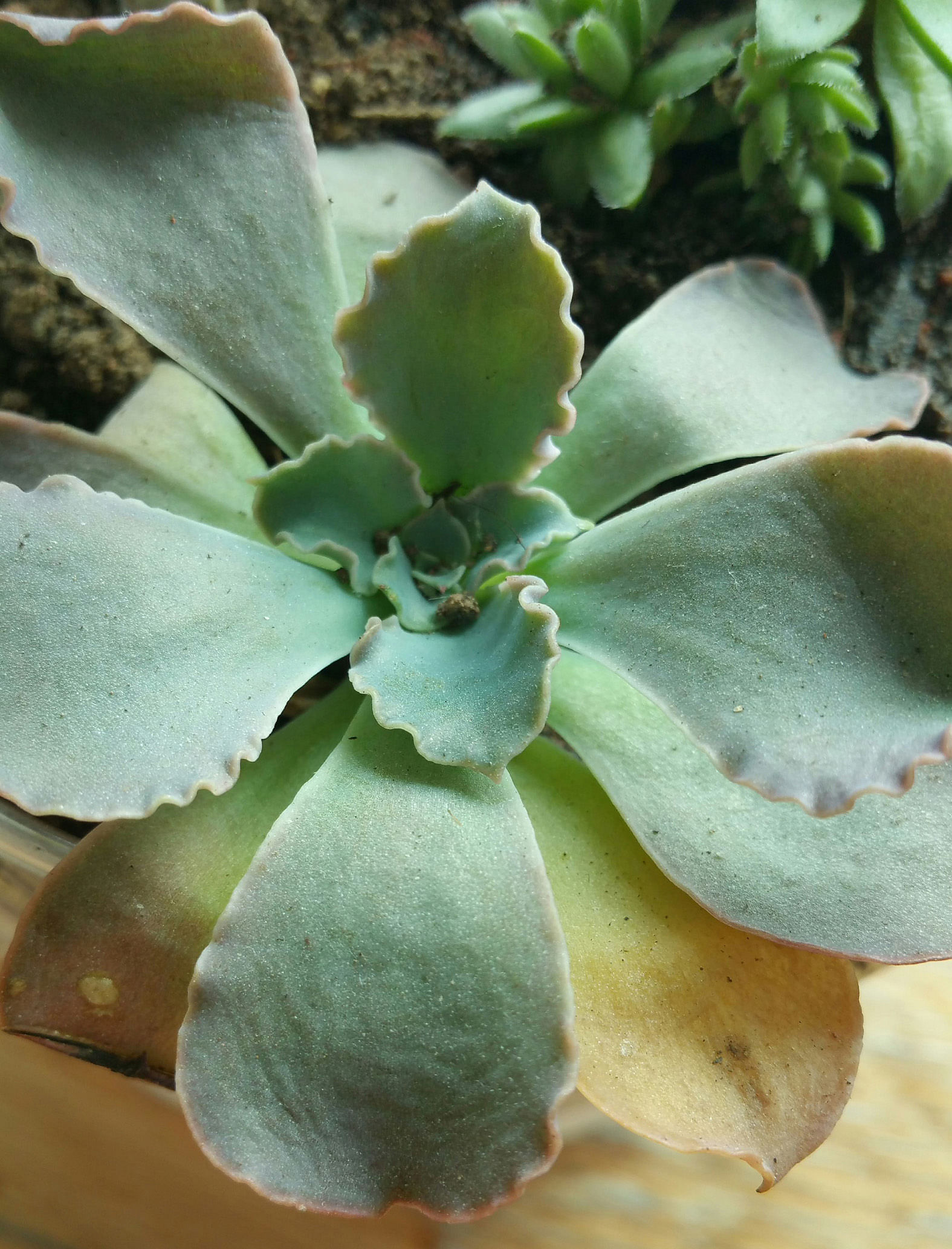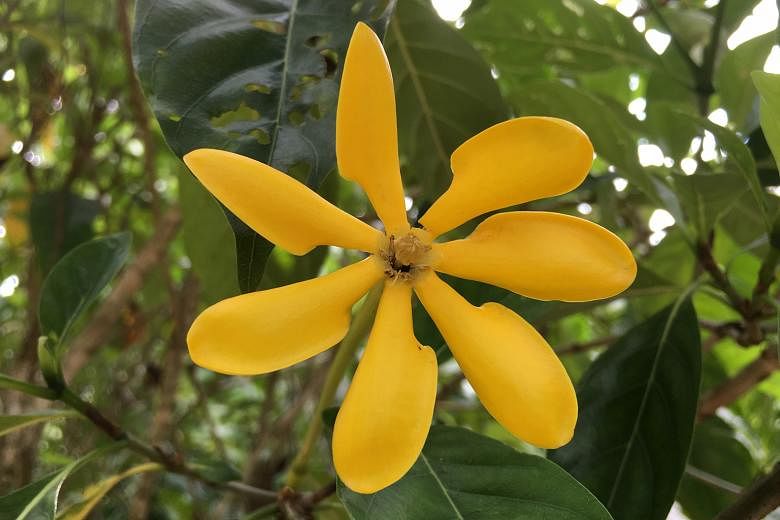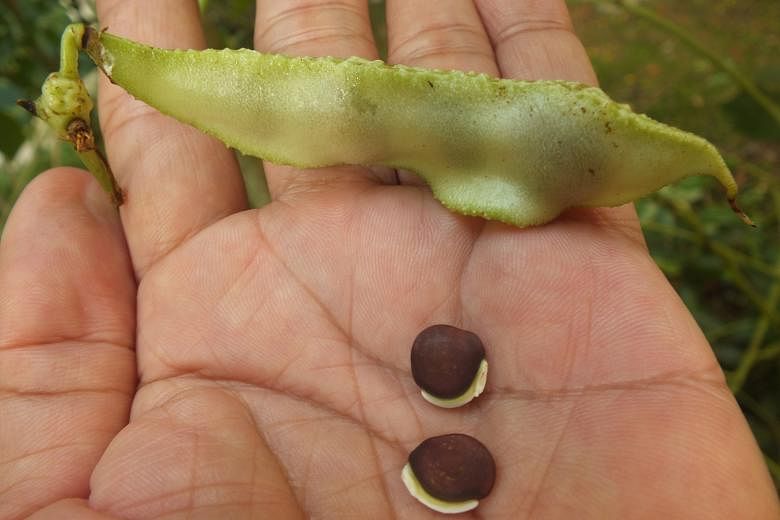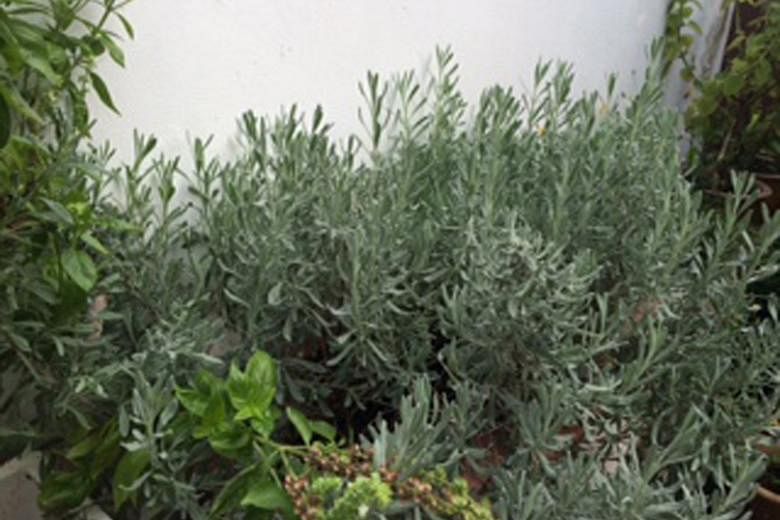Branch from rootstock producing red blooms
My potted Desert Rose, which I bought two years ago, has produced pink multi-petal flowers. Recently, red single- petal flowers sprouted from a new branch. Why is that so? I have not done any grafting, though I may have added some of the soil used to plant the red single-petal Desert Rose previously. Could such "natural grafting" be possible?
Goh Fong Lian
The red flower is produced by a branch growing out from the rootstock.
The plant you bought is a grafted one. This is evident from the graft union seen in the picture.
You can either enjoy the two types of flowers produced on a single plant or prune the branch that produces red flowers, leaving only the top part of the grafted plant that produces pink flowers.
Tip: Changing hues of Gardenia mutabilis' flowers
Often mistaken for Gardenia gjellerupii, Gardenia mutabilis periodically produces highly fragrant flowers that have long, slender floral tubes behind its petals.
The flowers change colour as time goes by. They are white when they first open around dusk and turn to pale yellow by the following morning and deep yellow by noon.
Gardenia mutabilis is best grown in a sunny outdoor area and in moist, well-draining soil.
Young pods of hyacinth bean are edible
I saw some shrubs in the garden of the Assisi Hospice. They had bean pods that look like snow peas, but these are flatter and have saw- like edges. Is this another variety of the snow pea? Where does it originate from? Are snow peas botanically a fruit?
Francis Lim
The plant is the hyacinth bean (its botanical name is Lablab purpureus). Several cultivars are available, where they vary according to the size of the pods and their colour.
The young pods are tender and edible as a vegetable. You can see them on sale at vegetable stalls in Little India. There is a variety that produces purple pods and flowers which are highly ornamental.
The snow pea (its botanical name is Pisum sativum) is difficult to grow in Singapore as it prefers cooler conditions.
Lavender may thrive better in planter box
I grew my lavender plant from cuttings I was given a few years ago. Now, it thrives in my planter box. How do I prune it and encourage it to flower? When can I expect it to flower? Should I transplant it into the ground or leave it in the planter box? What can I use the leaves for?
Chai Lim
You have done a good job growing lavender as it is not an easy plant to grow in tropical Singapore.
The cultivar is likely the Lavandula 'Goodwin Creek Grey'. It has grey, silvery leaves with scalloped edges. It is one of the cultivars that is more suited for growing in Singapore.
Plants flower at the tips of stems. Avoid pruning too frequently as this will prevent the production of flower spikes.
Keep the plant in the planter box as the soil outdoors tends to be too heavy and poorly drained for lavender. Keeping the plant in the planter box also protects it from heavy rain during the rainy season and keeps the roots dry.
Create a bottle of floral water by gently simmering lavender leaves and/or flowers in water for an hour. Allow the water to cool and strain the plant material before bottling it to use as a room spray.
Echeveria needs four hours of direct sunlight

My succulent is not as green as before. I place the pot near the window so that it gets the morning sun. What happened?
Pauline Tan
The plant is a cultivar of echeveria. It is a succulent that needs to be exposed to direct sunlight for at least four hours a day to keep its vibrant colours and compact growth habit.
Most cultivars are difficult to grow well in Singapore because of the tropical climate. They require a drier and less humid environment as well as a significant drop in temperature at night to thrive.
•Answers by Dr Wilson Wong, a certified practising horticulturist and founder of Green Culture Singapore (www.greenculturesg.com). He is also an NParks-certified park manager. He will speak about growing succulents, starting a miniature garden and more at the Singapore Garden Festival next month. General admission ticket to the festival applies (go to www.singaporegardenfestival.com).
•Have a gardening query? E-mail it with clear, high-resolution pictures of at least 1MB, if any, and your full name to stlife@sph.com.sg





